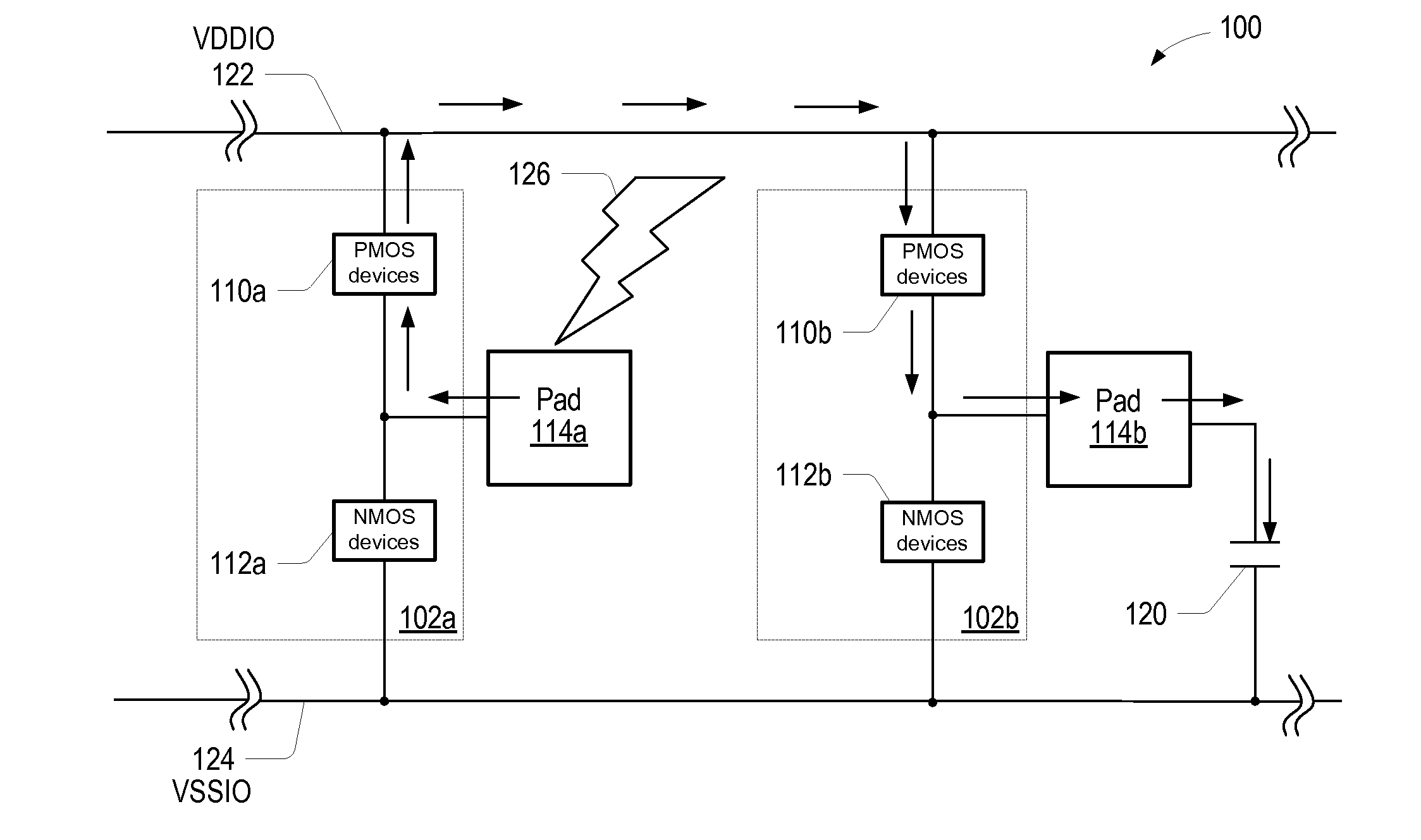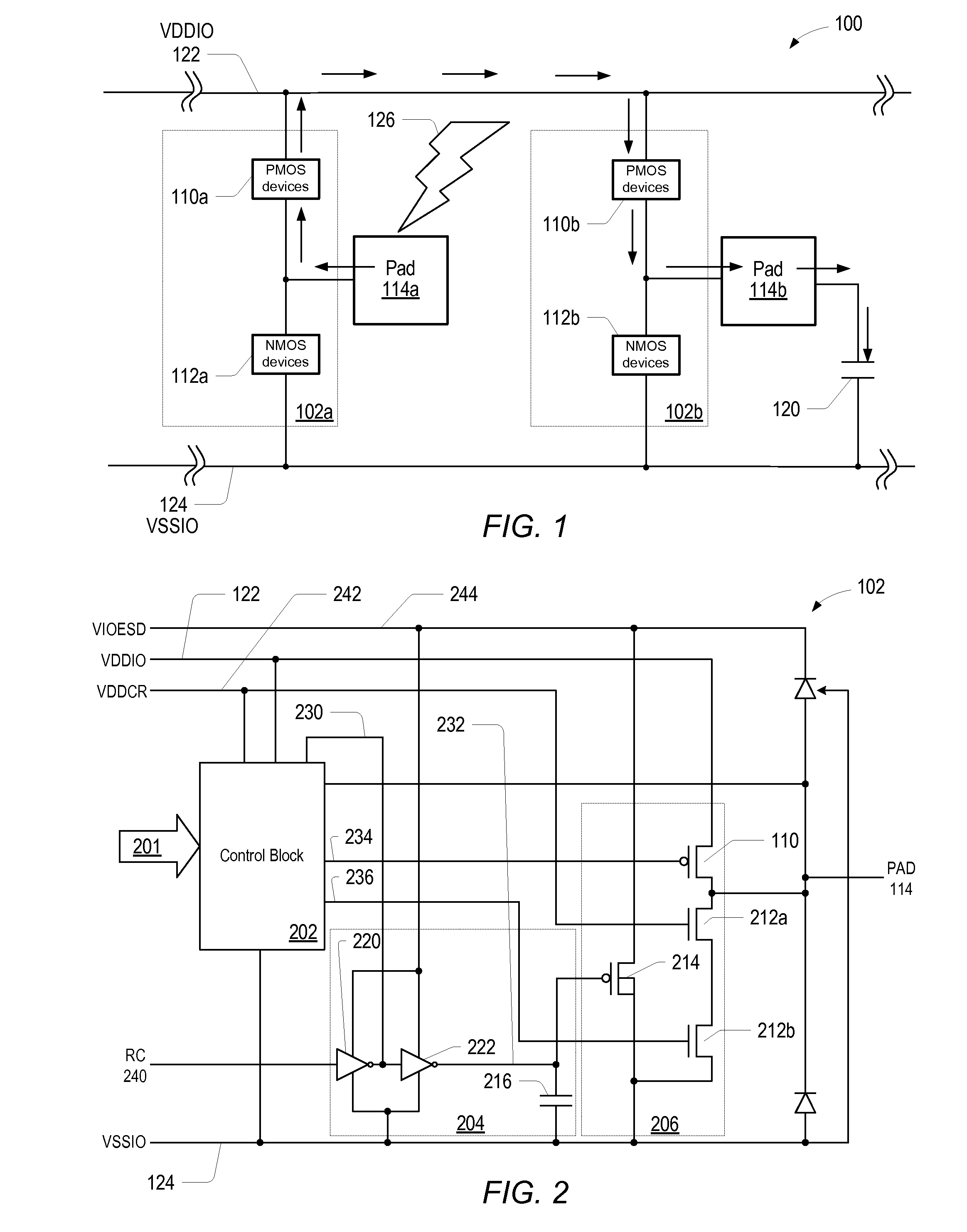Pad ESD Spreading Technique
a technology of esd and spreading, applied in the direction of emergency protective circuit arrangement, emergency protective arrangement for limiting excess voltage/current, electric discharge of very high current for a short duration, etc., can solve the problem of reducing the physical dimensions of circuit elements in many ics, for example in microprocessors, and reducing the maximum voltage. , the effect of improving esd performan
- Summary
- Abstract
- Description
- Claims
- Application Information
AI Technical Summary
Benefits of technology
Problems solved by technology
Method used
Image
Examples
Embodiment Construction
[0016]In one set of embodiments, a more robust electrostatic discharge (ESD) structure for a variety of variable input / output (I / O) pads may be realized. In one set of embodiments, output PMOS devices comprised in the output buffer of a pad, for example a digital I / O pad, may be enabled in response to an ESD event, to charge a pad capacitance (which may be approximately 3 pF) corresponding to the physical pad or pad cell, to spread out the ESD energy, which may result in a lower peak voltage and therefore better ESD performance. By configuring all of the pads comprised within the system, or integrated circuit, to operate this way, the ESD energy may be shared by the respective pad capacitances corresponding to all the pads, thereby reducing the maximum voltage that may develop in the system as a result of the ESD event (or of the energy of the ESD event). This method may be employed as an additional technique to be used in conjunction with other established solutions, such as variou...
PUM
 Login to View More
Login to View More Abstract
Description
Claims
Application Information
 Login to View More
Login to View More - R&D
- Intellectual Property
- Life Sciences
- Materials
- Tech Scout
- Unparalleled Data Quality
- Higher Quality Content
- 60% Fewer Hallucinations
Browse by: Latest US Patents, China's latest patents, Technical Efficacy Thesaurus, Application Domain, Technology Topic, Popular Technical Reports.
© 2025 PatSnap. All rights reserved.Legal|Privacy policy|Modern Slavery Act Transparency Statement|Sitemap|About US| Contact US: help@patsnap.com


